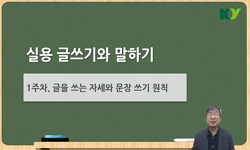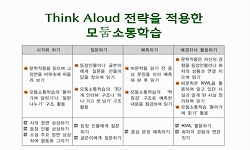Since the celadons excavated from the Son-gok 2-ri 4th kiln site are located in the Beopcheon temple site and at close range, the similarity to the celadons excavated from the Beopcheon temple site is being raised. Thus, this study examined the correl...
http://chineseinput.net/에서 pinyin(병음)방식으로 중국어를 변환할 수 있습니다.
변환된 중국어를 복사하여 사용하시면 됩니다.
- 中文 을 입력하시려면 zhongwen을 입력하시고 space를누르시면됩니다.
- 北京 을 입력하시려면 beijing을 입력하시고 space를 누르시면 됩니다.

법천사지 청자와 손곡2리 4호 가마터 청자의 도자사적 성격과 과학적 분석을 통한 생산 가마터 추정 연구 = A Study on Production Kiln Site Estimation, based on Historical Ceramic Characteristics and Scientific Analysis of the Celadons Excavated From the Beopcheon Temple Site and Son-gok 2-ri 4th Kiln Site
한글로보기https://www.riss.kr/link?id=A100956885
- 저자
- 발행기관
- 학술지명
- 권호사항
-
발행연도
2014
-
작성언어
Korean
- 주제어
-
KDC
900
-
등재정보
KCI등재
-
자료형태
학술저널
-
수록면
24-41(18쪽)
-
KCI 피인용횟수
0
- DOI식별코드
- 제공처
- 소장기관
-
0
상세조회 -
0
다운로드
부가정보
다국어 초록 (Multilingual Abstract)
Since the celadons excavated from the Son-gok 2-ri 4th kiln site are located in the Beopcheon temple site and at close range, the similarity to the celadons excavated from the Beopcheon temple site is being raised. Thus, this study examined the correlation using a natural-scientific method. In this study, historical ceramic properties of total 19 celadons were examined and they were scientifically analyzed. First of all, according to the scientific analysis, chemical compositions of celadon clay showed a dispersed distribution at RO2 3.79-7.77mole and RO+R2O 0.33-0.49mole. When the microstructure was analyzed, most celadons excavated from the Beopcheon temple site, Wonju, which are estimated to be used in real life, had a favorable state, and some celadons from the Son-gok 2-ri 4th kiln site were found not to be glazed and sintered properly. When analyzing body crystalline phases of the celadons using the XRD method, quartz and mullite were extracted from all of the samples. And corundum was extracted from sg4 sample. Though firing temperature of each sample was different, they were mostly fired to temperatures between 1150 and 1200℃ and some of them experienced a low temperature of 1100℃ or a high temperature above 1200℃. Various chemical compositions and producing techniques were observed in the celadons from the Beopcheon temple site and Son-gok 2-ri 4th kiln site and it is hard to assure that the Son-gok 2-ri 4th kiln site was the production kiln site of the celadons used in the Beopcheon temple site. But according to the analysis of rare earth elements, some of the celadons from the Beopcheon temple site and Son-gok 2-ri 4th kiln site displayed a distribution pattern with certain regularity and this implies there is a possibility that the raw materials used in producing the ceramics might have come from the same origin. From the perspective of ceramic history, the celadons excavated from the Beopcheon temple site and Son-gok 2-ri 4th kiln site were produced using the same molding and sintering technique. Also, it is estimated that they were produced in the 12th or 13th century, judging from the overall shapes and patterns of the celadons.
국문 초록 (Abstract)
손곡2리 4호 가마터 출토 청자는 원주 법천사지와 근거리에 위치하고 있어 법천사지 출토 청자와의 유사성이 제기되고 있으며, 따라서 자연과학적 방법을 통해 상관성을 알아보고자 하였다....
손곡2리 4호 가마터 출토 청자는 원주 법천사지와 근거리에 위치하고 있어 법천사지 출토 청자와의 유사성이 제기되고 있으며, 따라서 자연과학적 방법을 통해 상관성을 알아보고자 하였다. 총 19개 대상 청자에 대한 도자사적 성격을 알아보고, 과학적 분석을 진행하였다. 먼저, 과학적 분석결과 분석대상 청자 태토의 화학조성은 RO2 3.79-7.77mole, RO+R2O 0.33-0.49mole 영역에서 분산된 분포를 나타낸다. 미세구조 확인결과 실생 활에 사용되었을 것으로 추정되는 원주 법천사지 출토 청자는 대부분 자화 상태가 양호하며, 손곡2리 4호 가마터 수습 청자 중에는 시유와 소성이 제대로 이루어지지 않은 청자가 일부 확인되었다. 태토의 결정상 분석 결과 quartz와 mullite가 검출되었으며, 손곡2리 4호 가마터 수습 청자 중 일부에서는 corundum이 검출되었다. 분석대상 청자 대부분은 1150~1200℃에서 소성되었으며, 일부 1100℃ 이하 온도에서 소성된 청자와 1200℃ 이상 고온에서 소성된 청자도 확인된다. 분석 결과 법천사지와 손곡2리 4호가마터 청자 태토에서 다양한 화학조성 및 제작기법이 확인되었으며, 손곡2리 4호 가마터 청자가 법천사지에서 사용된 청자의 생산 가마터라고 단언하기 어렵다. 다만, 희토류 원소 분석에서는 법천사지와 손곡2리 4호 가마터 수습 일부 청자 에서 일정한 규칙성을 갖는 분포 패턴을 나타내어 도자기 제작에 사용된 원료가 동일기원일 가능성을 제시한다. 도자사적으로 살펴보면, 법천사지 출토 청자와 손곡2리 4호 가마터 수습청자는 성형방법과 번조방법에서 동일한 제작기법으로 확인된다. 또한 전반적인 청자의 기형과 문양의 양상으로 봤을 때, 12〜13세기에 제작된 것으로 보인다.
참고문헌 (Reference)
1 부안군, "흙으로 빚은 보물 扶安의 高麗靑瓷" 2011
2 고경신, "한국 전통 도자기 문화의 과학기술적 연구" 14 (14): 34-, 1992
3 강경인, "전남지역에서 출토된 고대 도자기의 태토조성과 소성온도" 6 (6): 15-30, 1997
4 이병훈, "원주 법천사지 출토 분청사기의 물성과 과학기술적 연구" 강원대학교 2008
5 이종근, "요업원료학" 대학교재출판사 55-58, 1978
6 양구군, "양구백토소지화 원천기술개발사업 최종보고서" 53-, 2011
7 이승구, "암석의 풍화과정 및 도자기 제조과정에 따른 희토류원소 분포도의 변화: 토양화학 및 고고학적 응용을 위한 기초연구" 한국암석학회 17 (17): 133-143, 2008
8 오영우, "세라믹스의 분석과 계산" 경남대학교 출판부 33-174, 1998
9 경기도박물관, "경기도 광주 관요-종합분석 보고서" 35-, 2008
10 圓光大學校博物館, "扶安 柳川里 7區域 靑瓷窯址群 發掘調査報告書" 2001
1 부안군, "흙으로 빚은 보물 扶安의 高麗靑瓷" 2011
2 고경신, "한국 전통 도자기 문화의 과학기술적 연구" 14 (14): 34-, 1992
3 강경인, "전남지역에서 출토된 고대 도자기의 태토조성과 소성온도" 6 (6): 15-30, 1997
4 이병훈, "원주 법천사지 출토 분청사기의 물성과 과학기술적 연구" 강원대학교 2008
5 이종근, "요업원료학" 대학교재출판사 55-58, 1978
6 양구군, "양구백토소지화 원천기술개발사업 최종보고서" 53-, 2011
7 이승구, "암석의 풍화과정 및 도자기 제조과정에 따른 희토류원소 분포도의 변화: 토양화학 및 고고학적 응용을 위한 기초연구" 한국암석학회 17 (17): 133-143, 2008
8 오영우, "세라믹스의 분석과 계산" 경남대학교 출판부 33-174, 1998
9 경기도박물관, "경기도 광주 관요-종합분석 보고서" 35-, 2008
10 圓光大學校博物館, "扶安 柳川里 7區域 靑瓷窯址群 發掘調査報告書" 2001
11 圓光大學校 馬韓·百濟文化硏究所, "扶安 鎭西里 靑瓷窯址-第18號窯址發掘" 2001
12 海剛陶磁美術館, "康津의 靑磁窯址" 1992
13 圓光大學校 馬韓·百濟文化硏究所, "各地 試發掘調査 報告書" 2000
14 (財)江原考古文化硏究院, "原州 法泉寺 Ⅱ" 36-, 2014
15 日本セラミックス協會, "セラミック工學ハンドブック" 1485-, 1989
16 C. S. Hsi, "Thermal Behavior of Alumina— Silica Xerogels During Calcination" 72 (72): 2008-2210, 1989
17 Taylor, S.R, "The continental crust; Its compositi on and evolution" Blackwell 312-, 1985
18 B. SONUPARLAK, "Spinel Phase Formation During the 980℃ Exothermic Reaction in the Kaolinite-to-Mullite Reaction Series" 70 (70): 837-842, 1987
19 Aubert, D, "REE fractionation during granite weathering and removal bt waters and suspended loads: Sr and Nd isotope evidence" 65 : 387-406, 2001
20 류호진, "Kaolinite-Aluminum Trihydroxide의 혼합물의 혼합분쇄효과 및 Mullite의 생성에 미치는 영향" 34 (34): 195-201, 1997
21 M. S. Tite, "Archaeometry No.7" 131-144, 1969
22 Ding, S-M, "Accumulati on and Fractionation of Rare Earth Elements un a Soil-Wheat System" 16 : 82-90, 2006
23 Ling, T, "A review of fractionation of rare earth elements in plants" 26 : 7-15, 2008
동일학술지(권/호) 다른 논문
-
‘숙천제아도’를 통해 본 조선시대 중앙관아의 공간구조와 조경기법
- 국립문화재연구원
- 신상섭
- 2014
- KCI등재
-
중국 중원 지역과의 비교를 통하여 본소흑석구 8501호 석곽묘의 청동예기
- 국립문화재연구원
- 오강원
- 2014
- KCI등재
-
- 국립문화재연구원
- 최수형
- 2014
- KCI등재
-
- 국립문화재연구원
- 황경순
- 2014
- KCI등재
분석정보
인용정보 인용지수 설명보기
학술지 이력
| 연월일 | 이력구분 | 이력상세 | 등재구분 |
|---|---|---|---|
| 2027 | 평가예정 | 재인증평가 신청대상 (재인증) | |
| 2021-01-01 | 평가 | 등재학술지 유지 (재인증) |  |
| 2018-01-01 | 평가 | 등재학술지 유지 (등재유지) |  |
| 2015-01-01 | 평가 | 등재학술지 유지 (등재유지) |  |
| 2011-01-01 | 평가 | 등재학술지 선정 (등재후보2차) |  |
| 2010-01-01 | 평가 | 등재후보 1차 PASS (등재후보1차) |  |
| 2008-01-01 | 평가 | 등재후보학술지 선정 (신규평가) |  |
학술지 인용정보
| 기준연도 | WOS-KCI 통합IF(2년) | KCIF(2년) | KCIF(3년) |
|---|---|---|---|
| 2016 | 0.39 | 0.39 | 0.32 |
| KCIF(4년) | KCIF(5년) | 중심성지수(3년) | 즉시성지수 |
| 0.3 | 0.32 | 0.57 | 0.08 |




 RISS
RISS





